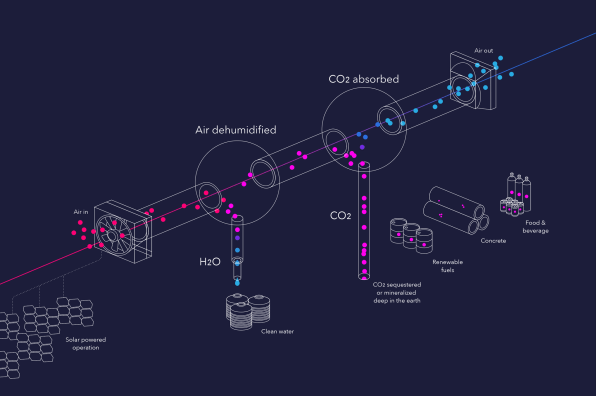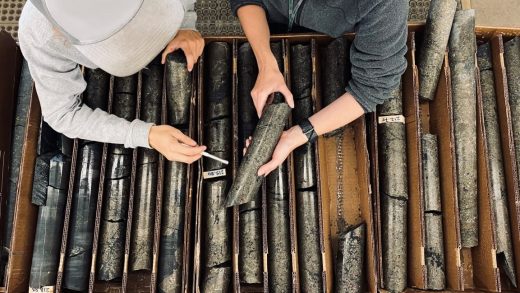This startup is reinventing CO2 capture to reduce the costs
Direct air capture—technology designed to suck CO2 from the atmosphere—could be a critical tool in fighting climate change. Climate models, including the one used by the IPC, show decarbonizing society won’t be enough; we’ll also need huge capacity for “negative emissions” to reach climate goals. But at the moment, direct air capture is too expensive to be a valuable tool.
One direct air capture startup, called CarbonCapture, wants to help bring costs down by changing a key material used in the technology. The company, which announced the close of a $35 million Series A round of financing today, tweaked the direct air process so it’s possible to pull the carbon from the air using a mineral—called zeolites—which is much cheaper than the raw materials used in other methods.

Some companies capture CO2 using amines, a type of organic compound that degrades over time. Others use a chemical processing approach that’s more complex and only works well at a large scale, says CEO Adrian Corless. “The challenge there is that if you’re having to build very large plants to be economic, the time it takes to develop those projects, and then learn from them, and then iterate, is years instead of months,” he says. According to CarbonCapture, zeolites are easy to source and so can make the process cheaper. “They’re made in millions of tons per year in different industries, and they’re very inexpensive,” adds Corless. The company hopes it will help to more quickly reach a goal price of $100 or less per ton of CO2 captured.
Zeolites haven’t been used in the past because they absorb water along with CO2, but the startup found a way to remove the water efficiently—and the machines can also be adjusted to produce a certain amount of water for other uses, including drinking water. The process can also be tweaked to produce different types of CO2 from what is removed from the air: To sequester CO2 into rock, for example, the CO2 doesn’t have to be as pure as it would if the it was going to be used by a soda company.
The company spun out of Idealab Studio, a technology incubator that has also created other climate-focused startups, such as Heliogen, which makes solar power accessible for hard-to-decarbonize sectors like steel and cement, and Energy Vault, which uses gravity to store renewable energy. CarbonCapture expects to have its first modules ready for commercial deployment within two years. One early customer is likely to be a mine—the Tamarack Nickel Project in development in central Minnesota, in partnership with Rio Tinto and Talon Metals Corp. When the mine pulls up nickel for use in products like electric vehicle batteries, it will also extract minerals that happen to be well suited for sequestering CO2. The mine will test whether it can accelerate the natural sequestration process by adding captured CO2 to its tailings and rocks that are returned underground. In theory, the mine could become carbon negative.
(31)



